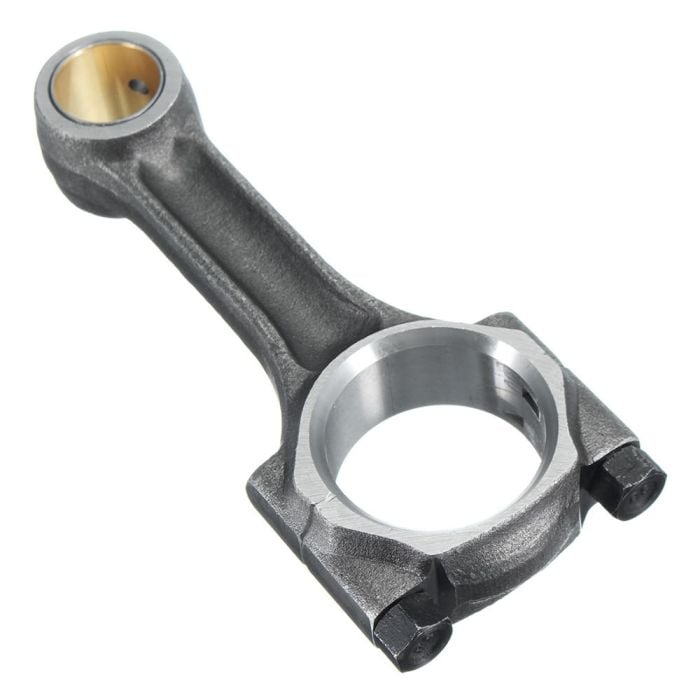Ensure long-term reliability with the right clp engine.
Ensure long-term reliability with the right clp engine.
Blog Article
How a Clp Engine Can Improve Effectiveness in Various Industries
The arrival of CLP engines marks a substantial shift in functional efficiency across various fields, driven by their capability to maximize fuel usage and minimize downtime. Industries such as production and logistics stand to gain significantly from their robust layout and consistent power outcome, which promise to improve procedures and enhance efficiency. As companies increasingly focus on sustainability alongside efficiency, the function of CLP engines comes to be even extra crucial. What remains to be seen is how these improvements will certainly shape the future landscape of commercial procedures and their influence on more comprehensive economic trends (clp engine).
Introduction of CLP Engines
CLP engines, or Constant Liquid Propellant engines, represent a considerable development in propulsion innovation, specifically for room applications. These engines make use of a continuous feed system that enables the continual expulsion of propellant, causing improved effectiveness and efficiency contrasted to traditional strong or hybrid propulsion systems. By keeping a consistent circulation of fluid propellant, CLP engines can attain more accurate thrust control, which is critical for steering spacecraft in various mission scenarios.
The style of CLP engines integrates sophisticated materials and ingenious fuel administration systems. clp engine. This results in lowered weight and enhanced integrity, essential variables for long-duration space goals. Furthermore, the continuous procedure minimizes the risk of burning instability, a typical obstacle in standard rocket engines.

Benefits in Manufacturing
The manufacturing of Continuous Liquid Propellant (CLP) engines offers a number of notable advantages that boost both efficiency and cost-effectiveness. One of the primary benefits is the structured production procedure, which decreases the complexity connected with typical propulsion systems. By utilizing fluid propellant, suppliers can attain greater accuracy in engine performance, resulting in maximized power outcome and lowered waste.
Furthermore, CLP engines help with a greater degree of modularity, allowing for easier combination right into different manufacturing lines. This adaptability can significantly reduce preparations and improve overall operational versatility. Using CLP innovation also has a tendency to decrease the need for extensive upkeep because of fewer moving parts, which converts right into lowered downtime and operational expenses.

Applications in Logistics
Leveraging Continual Liquid Propellant (CLP) engines in logistics supplies considerable benefits in operational efficiency and dependability. These engines give a robust service for numerous transportation requirements, enabling the seamless activity of goods throughout vast distances. The intrinsic style of CLP engines permits constant power output, which converts into smoother and more foreseeable transport schedules.
Among the vital applications helpful hints of CLP engines in logistics is in durable products transportation, where they can drive both ground and airborne automobiles. Their capacity to preserve high performance under differing load conditions makes sure that shipment timelines are satisfied, consequently enhancing customer complete satisfaction. Additionally, More Info CLP engines can be integrated into automated logistics systems, facilitating real-time tracking and optimizing course preparation.
Additionally, the sturdiness of CLP engines decreases upkeep downtime, enabling logistics firms to maximize their operational capabilities. This is specifically advantageous in warehousing procedures, where efficiency in managing and transporting items is essential. As logistics continues to develop, the integration of CLP engines represents a forward-thinking method that not only boosts performance but likewise sustains the industry's growing needs for integrity and speed.
Effect On Power Effectiveness
Just How do Constant Liquid Propellant (CLP) engines boost power effectiveness in transport? CLP engines utilize a consistent flow of fluid gas, enhancing burning procedures and maintaining a steady thrust output. This layout decreases energy losses related to conventional combustion engines, where fuel shipment can vary and cause inefficiencies.
The continuous operation of CLP engines permits an extra reliable thermal cycle, causing greater specific impulse contrasted to standard engines. clp engine. This translates to reduced fuel usage for the very same amount of work done, dramatically lowering operational expenses across numerous transportation sectors, consisting of air travel and maritime sectors
Additionally, the capability of CLP engines to preserve ideal performance under varying tons conditions decreases the requirement for constant acceleration and see this page slowdown, even more boosting gas effectiveness. Boosted power performance not just adds to set you back savings however additionally results in reduce greenhouse gas exhausts, straightening with worldwide sustainability goals.
Future Trends and Innovations
Arising improvements in Continuous Liquid Propellant (CLP) engine technology assurance to transform the landscape of transport efficiency and sustainability. As sectors pivot towards greener options, CLP engines stand at the center, incorporating ingenious products and style methodologies that boost performance while minimizing ecological effect.
One of one of the most encouraging fads is the fostering of hybrid systems that incorporate CLP engines with sustainable power resources. This synergy can optimize gas intake and reduce exhausts, lining up with international sustainability goals. Advancements in computational liquid dynamics (CFD) are promoting the style of even more aerodynamically effective engines, leading to reduced drag and enhanced fuel efficiency.
Moreover, the development of clever monitoring systems is readied to enhance functional efficiencies. These systems take advantage of data analytics and IoT innovation to maximize engine performance in real-time, making certain that the engines operate within their most efficient criteria.
As research remains to explore different propellant solutions-- such as biofuels and synthetic gas-- the future of CLP engines looks promising. By using these developments, markets can not just boost their performance however additionally contribute dramatically to a cleaner, a lot more lasting future in transportation.
Verdict
Finally, CLP engines stand for a substantial development in effectiveness throughout numerous industries. Their ability to enhance gas intake and lower functional costs, integrated with a constant feed system, improves power result and functional integrity. The integration of advanced materials and fewer moving parts lessens upkeep demands, while placement with sustainability objectives placements CLP engines as a pivotal technology for the future. Continued innovation in this field promises further improvements in efficiency and environmental performance.
Report this page